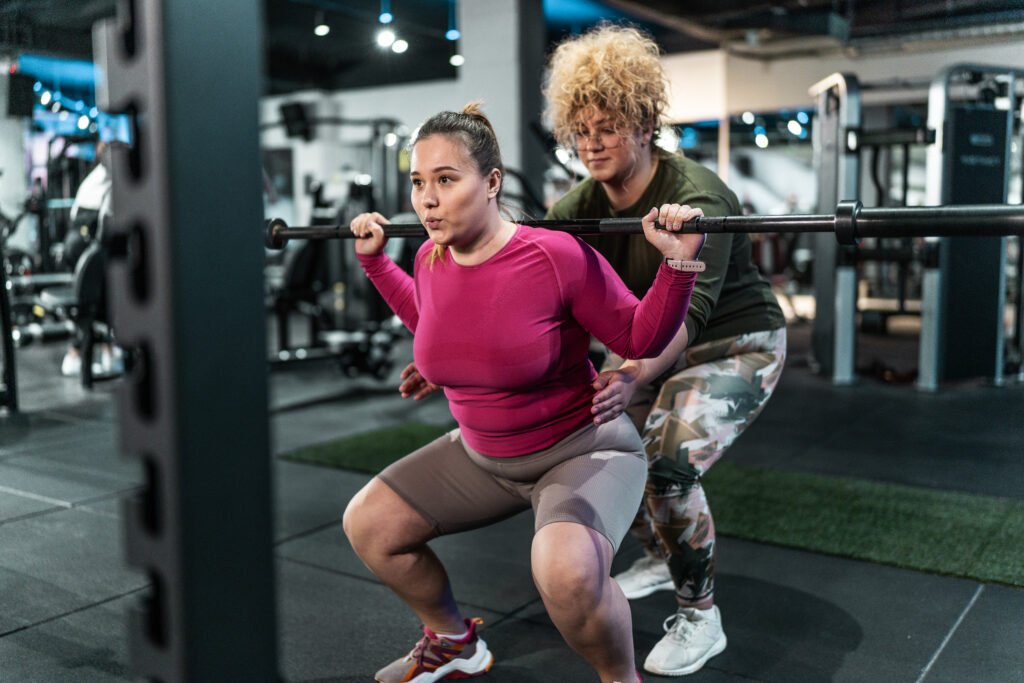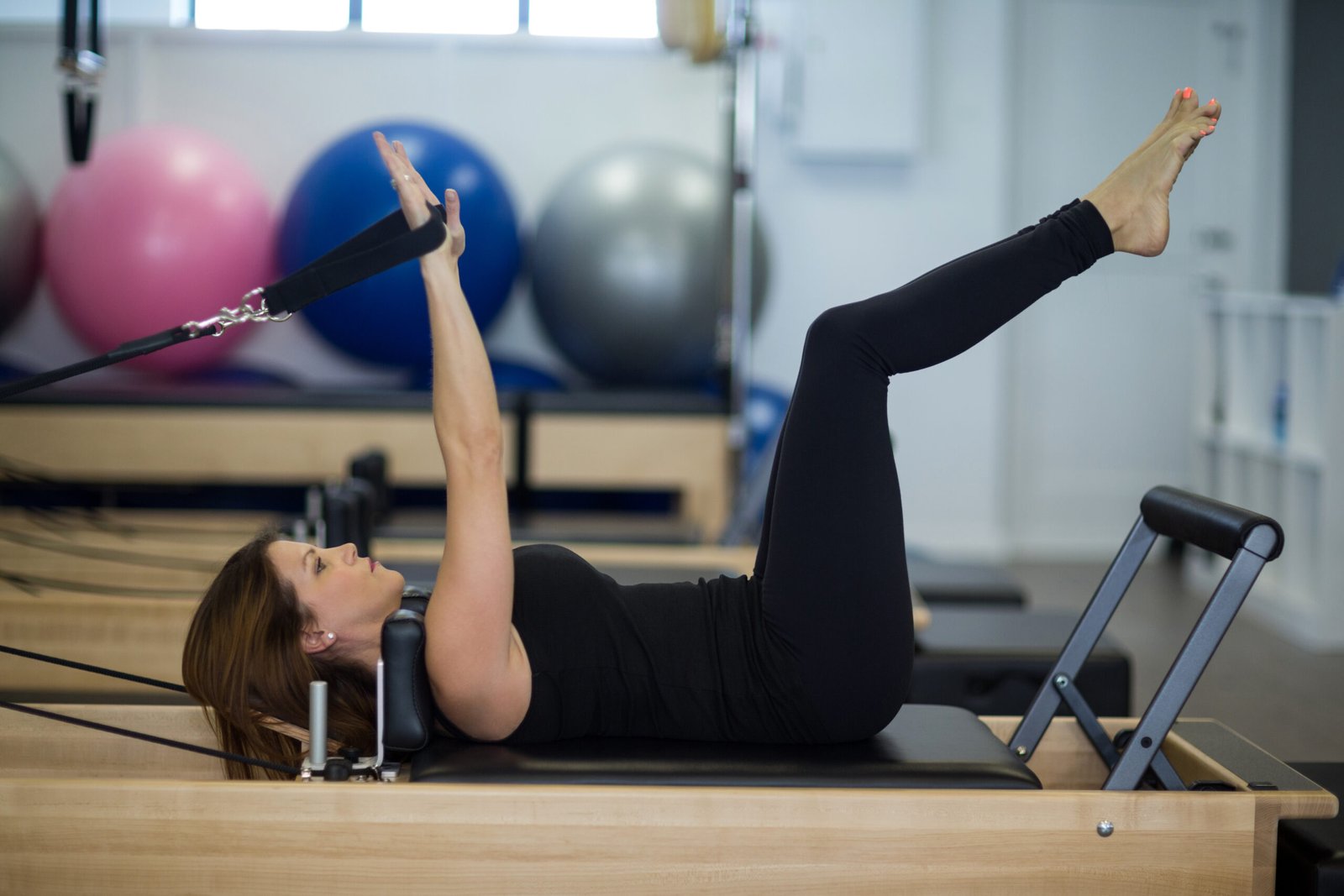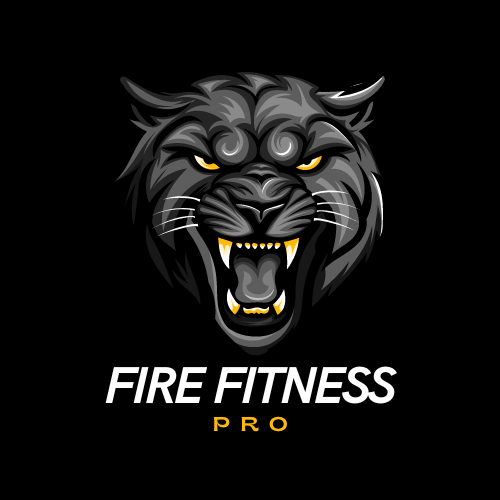The journey to lifelong fitness doesn’t have to be a mystery. By embarking on a path of strength training, you can unlock incredible health benefits tailored specifically for each stage of life. From playful exercises in childhood to dynamic routines in adulthood and adaptive workouts in senior years, strength training offers a unique path for everyone. In this blog post, we will explore how to create strength training programs tailored for kids, adults, and seniors, to ensure optimal health and fitness at any age.
Fitness for All Ages: Tailoring Workouts to Different Life Stages
Strength training is crucial for maintaining and improving physical health, regardless of age. It benefits everyone from young children to seniors by enhancing muscle strength, endurance, and overall well-being. When workout programs are tailored to the specific developmental needs and capabilities of each age group, they become even more effective. Kids’ strength training should focus on building foundational movement skills, while adult programs aim to enhance muscle strength, endurance, and balance, supporting busy lifestyles. For seniors, adapting fitness routines helps maintain muscle mass, improve mobility, and promote independence.
Examples of Tailored Strength Training Programs:
– Kids: Engage in activities that build basic motor skills, such as obstacle courses or gymnastics, focusing on safety and fun.
– Adults: Incorporate a mix of compound movements and balance exercises, like deadlifts and planks, to fit their fitness goals and lifestyle needs.
– Seniors: Adapt exercises to include gentle strength training and mobility work, such as chair squats and resistance band exercises.
Understanding these age-appropriate strategies can help tailor training plans that cater to the unique needs and goals of each life stage, promoting a holistic approach to lifelong fitness.
Understanding the Different Life Stages
| Age Group | Key Focus | Recommended Exercises | Benefits |
|---|---|---|---|
| Children | Develop motor skills, coordination | Jumping jacks, hopscotch, animal movements | Enhances coordination, builds foundational strength, promotes social interaction and fun. |
| Adults | Muscle growth, endurance, and balance | Squats, lunges, deadlifts, planks | Improves strength, reduces injury risks, supports weight management, and enhances overall fitness. |
| Seniors | Maintaining muscle mass, mobility, and balance | Chair squats, resistance band exercises, tai chi | Promotes balance, reduces fall risk, maintains muscle mass, and boosts independence and mobility. |
Strength training offers benefits across all life stages, enhancing overall health from childhood through senior years. For kids, the focus is on developing motor skills, building a foundation for lifelong fitness, and improving coordination through fun and engaging activities. Adult programs prioritize muscle growth and healthy body composition, tailoring workouts to specific fitness goals and lifestyle needs. Senior-centric programs emphasize maintaining muscle mass, improving balance, and enhancing mobility, crucial for sustaining independence and reducing fall risks. Recognizing the unique needs at each life stage ensures effective strength training that promotes fitness and well-being throughout life.
Life Stage-Specific Focus:
– Children: Develop motor skills and coordination through playful exercises like animal movements or tagging games.
– Adults: Target muscle growth and endurance with structured routines including gym-based or home workouts that are time-efficient.
– Seniors: Focus on functional exercises that enhance balance and mobility, such as tai chi or water aerobics.
Acknowledging the diverse needs and capabilities inherent to each stage can help tailor training for lifelong benefits effectively and safely.
Childhood and Adolescence
Childhood and adolescence represent crucial periods for developing motor skills, coordination, and a robust foundation for future physical activities. During these stages, the body undergoes rapid growth and hormonal changes, making age-appropriate strength training essential. It’s important to focus on body weight exercises and skill development in a fun and engaging way to keep kids motivated and instill a lifelong love for fitness. Additionally, educating young athletes on proper techniques can prevent injuries and promote healthy exercise habits. Strength training can also bolster psychological benefits, such as boosting self-esteem, enhancing mental health, and promoting a positive body image.
Key Components of Childhood Training:

– Foundation Building: Incorporate exercises like jumping jacks or hopscotch that enhance coordination.
– Growth and Development: Engage kids in modified strength activities, such as planks or wall sits, that complement their growth spurts.
– Fun Activities: Games like freeze tag or group sports that build physical skills while having fun.
Incorporating these strategies into childhood strength training programs can ensure a safe, effective, and enjoyable introduction to fitness.
The Role of Play and Physical Activity in Childhood Development
Play and physical activity are vital for children’s physical, emotional, and cognitive development, setting the stage for lifelong fitness habits. Engaging in play helps children hone essential motor skills, coordination, and strength, preparing them for future structured strength training programs. These activities also contribute to developing social skills, self-esteem, and emotional resilience through teamwork and competition. By integrating playful elements into exercise routines, strength training becomes an enjoyable endeavor, fostering consistency and a healthy attitude towards fitness. Exposure to varied physical activities early on encourages adaptability and a willingness to explore diverse fitness challenges as they grow.
Playful Elements in Child Fitness:
– Motor Skills: Activities like balance beams or climbing structures aid in developing coordination.
– Social Interaction: Team sports or cooperative games nurture communication and teamwork skills.
– Creative Movement: Dance or improvisational movement activities nurture creativity while building strength.
Infusing fun into physical activities not only supports fitness but lays a strong foundation for lifelong health habits in children.
Young Adulthood
Young adulthood is a pivotal time for establishing a solid foundation in strength training due to peak physical capabilities and robust muscle-building capacity. By balancing compound movements with core stability exercises, young adults can optimize overall strength and functional fitness. Consistency and progression are key in training routines to achieve fitness goals while minimizing injury risks. This stage presents an ideal opportunity to develop healthy habits that can lead to lifelong adherence to fitness practices. Crafting programs that consider individual fitness levels, goals, and sports interests ensures maximum engagement and benefit.
Effective Strength Training for Young Adults:

– Balanced Program: Integrate strength exercises like squats and lunges with core exercises such as planks.
– Consistent Routine: Schedule regular workout sessions, ensuring progressive overload to build muscle over time.
– Versatile Workouts: Include a combination of gym sessions and home or outdoor exercises to maintain engagement.
Forming these routines during young adulthood sets a strong precedent for a healthier, active lifestyle.
Balancing Fitness with a Busy Lifestyle
Amid hectic schedules, it’s crucial to prioritize regular fitness activities to ensure consistency in strength training routines. Short, efficient workout sessions—integrated into parts of the day like lunch breaks or early mornings—can sustain fitness engagement. Adaptable programs tailored to individual lifestyles allow personalized and effective workout sessions. Incorporate exercises that can be performed at home or on the road to maintain fitness levels despite a busy lifestyle. Setting realistic goals and tracking progress can help keep motivation high and ensure adherence to strength training across various life stages.
Fitness Tips for Busy Lives:
– Short Sessions: Split workouts to fit into 10-15 minute breaks, focusing on high-intensity exercises.
– Home Workouts: Body-weight circuits that don’t require equipment offer flexibility.
– Travel Fitness: Portable equipment like resistance bands facilitates workouts on the go.
Applying these strategies can help young adults maintain a balanced and consistent approach to fitness, no matter how busy life gets.
Middle Adulthood
Middle adulthood is a crucial period for maintaining muscle mass and bone density through strength training. Tailoring exercise routines to fit the unique needs and goals of individuals in this age group can significantly enhance overall health and well-being. Regular strength training helps manage weight, improve metabolic rate, and lower the risk of chronic diseases. It’s also beneficial for mental health by reducing stress and enhancing cognitive function. Focusing on proper technique and gradual intensity progression ensures workouts are safe and effective.
Strength Training Strategies for Middle Adults:
| Exercise | Sets | Reps | Frequency | Rest Time | Notes |
|---|---|---|---|---|---|
| Seated Leg Lifts | 2-3 | 10-12 | 2-3 times per week | 30 seconds | Perform seated on a sturdy chair. |
| Wall Push-Ups | 2-3 | 8-10 | 2-3 times per week | 30 seconds | Keep body straight and engage core. |
| Toe Stands | 3 | 10-12 | 2-3 times per week | 30 seconds | Hold onto a chair for support if needed. |
| Chair Squats | 2-3 | 8-10 | 2-3 times per week | 30 seconds | Lower as if sitting down to a chair. |
| Bicep Curls | 2 | 10-12 | 2-3 times per week | 30 seconds | Use light weights or household items. |
– Muscle Mass Maintenance: Incorporate resistance exercises, such as weightlifting or body-weight strength training.
– Bone Health: Focus on weight-bearing exercises like squats and lunges to support bone density.
– Mental Health Support: Activities like yoga or Pilates that combine strength and flexibility can enhance cognitive and emotional well-being.
By addressing these areas, middle adults can enjoy improved health, vitality, and quality of life.
Addressing the Impact of Aging on Metabolism and Muscle Mass
Aging naturally impacts metabolism and muscle mass, leading to decreased strength and potential health issues. Targeted strength training mitigates these effects, promoting healthy aging and improving quality of life. Incorporating resistance exercises can curb muscle loss and enhance metabolic function, which is crucial for seniors. Customizing fitness programs to accommodate age-specific needs ensures optimal results across all age groups. A lifelong commitment to strength training supports overall health and well-being, benefiting kids, adults, and seniors alike.
Age-Sensitive Fitness Adjustments:
– Resistance Training: Use of machines or free weights to strengthen muscle endurance.
– Metabolic Boosters: High-rep, low-weight exercises to enhance metabolism.
– Flexibility Focus: Cardio activities and stretching improve range of motion and muscle suppleness.
Approaching strength training with these considerations can significantly offset the effects of aging, promoting vitality and health.
Senior Years
Strength training plays a vital role in maintaining muscle mass and bone density in seniors, promoting overall health and longevity. Adaptations in exercise programs for seniors focus on safety, joint-friendly exercises, and balance improvement to reduce fall risk. Additionally, regular strength training in older adults can enhance cognitive function and reduce symptoms of depression and anxiety. With age, consulting healthcare professionals for personalized training plans tailored to individual fitness levels and medical conditions becomes essential. Encouraging a supportive community environment, such as group classes or fitness clubs, fosters motivation and social interaction.
Senior-Focused Workout Elements:
| Age Group | Exercise | Purpose | How-To | Benefits |
|---|---|---|---|---|
| Children | Animal movements (e.g., bear crawl, frog jumps) | Develop motor skills and strength | Perform crawling or jumping exercises imitating animal movements. | Improves coordination, enhances flexibility, and builds muscle strength through play. |
| Adults | Deadlifts, squats, push-ups | Build strength and endurance | Perform compound movements focusing on legs, core, and upper body. | Boosts muscle mass, improves functional fitness, enhances posture. |
| Seniors | Wall push-ups, seated leg lifts | Strengthen upper body and lower limbs | Perform push-ups against a wall or seated leg raises while seated on a chair. | Boosts arm and leg strength, reduces fall risks, improves mobility and flexibility. |
– Safe Strength Building: Utilize seated strength exercises to alleviate joint strain.
– Balance and Mobility: Incorporate tai chi or yoga practices for improving stability.
– Group Interaction: Encourage participation in senior exercise classes to foster community.
These tailored approaches help seniors maintain independence, mental sharpness, and overall health.
Tailoring Workouts to Accommodate Physical Limitations
| Adaptation | Exercise Type | Adjustment/Modification | Purpose | Benefits |
|---|---|---|---|---|
| Limited Mobility | Chair-based exercises | Seated leg lifts, chair squats, seated marches | Build lower body strength, enhance circulation | Improves flexibility, balance, and mobility while preventing falls. |
| Arthritis or Joint Pain | Resistance band exercises | Use lighter resistance bands, perform slower controlled movements | Enhance muscle endurance and joint mobility | Reduces joint strain, supports muscle strength, and alleviates pain. |
| Low Bone Density (Osteoporosis) | Weight-bearing exercises | Light weight lifting (dumbbells), walking with support | Strengthen bones and muscles | Boosts bone density, maintains posture, reduces fracture risk. |
Workout customization is vital in acknowledging and addressing individual physical limitations and goals to ensure safety and effectiveness. For kids, playful and engaging strength routines promote overall development. Adults benefit from workouts addressing physical challenges like limited mobility or chronic conditions, enhancing fitness. Senior-oriented programs emphasize balance, flexibility, and gentle strength training to maintain independence and reduce injury risks. Adaptive equipment and modifications across all age groups accommodate varying abilities, ensuring an inclusive fitness experience.
Adaptive Fitness Tips:
– Kids and Play: Encourage active play with simple equipment, promoting strength without overburdening the body.
– Adult Adjustments: Focus on exercises such as low-impact aerobics that protect joints while strengthening.
– Senior Adaptations: Use supportive tools like handrails during balance exercises to prevent falls.
Incorporating adaptive strategies ensures that every individual can partake in strength training safely and effectively, regardless of physical limitations.
Benefits of Tailoring Workouts to Life Stages
Tailoring workouts to life stages offers numerous advantages, fostering a fitness journey that adapts to the evolving needs and capabilities of each individual. Enhanced developmental support for kids helps improve motor skills and establishes healthy habits. Customized programs for adults optimize performance and focus on increasing strength, improving cardiovascular health, and reducing stress. For seniors, age-specific workouts result in enhanced mobility, balance, and bone density, promoting a healthier lifestyle. Personalizing workouts minimizes injury risks, ensuring exercises are safe and effective for each age group. Overall, tailoring strength training promotes sustainable routines, supporting a continuous path to health and fitness throughout life.
Benefits by Age Group:
– Children: Developing impactful foundational skills that encourage lifelong fitness habits.
– Adults: Achieving efficient fitness solutions aligned with demanding schedules and personal goals.
– Seniors: Maintaining active, independent lifestyles via appropriately modified exercises.
Tailored workouts offer comprehensive benefits across a lifetime, cementing strength training as an integral part of healthy living.
Enhanced Long-Term Health
Strength training imparts lifelong health benefits, bolstering muscle mass, bone density, and overall fitness. Tailored programs ensure exercises align with the specific needs of kids, adults, and seniors. For children, strength training enhances motor skills and lays a strong foundation for future fitness. Adults benefit from maintaining muscle mass, bolstering metabolism, and mitigating chronic disease risks. For seniors, improved balance and mobility are critical for sustaining independence and preventing falls.
Health Improvements via Strength Training:
– Kids: Active games that foster physical growth and endurance.
– Adults: Strength sessions that elevate metabolic function and fortify muscles.
– Seniors: Gentle exercises that safeguard against falls and other age-related challenges.
Implementing these age-appropriate practices can significantly enhance lifelong well-being and quality of life.
Mental Health and Cognitive Benefits
Strength training is not only beneficial for physical health but also boosts mental well-being across all age groups. It reduces anxiety and depression symptoms, offering significant cognitive benefits, including improved focus, memory retention, and mental acuity. For children, engaging in strength training increases self-esteem and healthier stress management. Adults experience heightened mood and increased resilience to mental fatigue while participating in strength programs. Seniors benefit from a reduced risk of cognitive decline, supporting sharper thinking and a better quality of life.
Mental Advantage Strategies:
– Kids: Activities that combine physical and mental effort, such as team sports, nurture self-confidence.
– Adults: Mindfulness exercises like meditation post-workout enhance mental clarity.
– Seniors: Cognitive challenges paired with physical activity like puzzle-solving during walks stimulate thinking.
Fostering mental well-being through these approaches can improve quality of life significantly at any age.
Social Connections and Support
Strong social connections and support play a crucial role in maintaining motivation and consistency in strength training programs across all age groups. Workout partners, family involvement, and community fitness groups enhance adherence to regular fitness routines. Group training sessions foster encouragement and accountability among participants. Exercising within a supportive environment reduces stress and boosts overall well-being. Creating inclusive fitness communities encourages a lifelong commitment to strength training for kids, adults, and seniors, highlighting the collective benefits of fitness engagement within a communal setting.
Social Support in Fitness:
– Kids: Team sports that encourage collaboration and mutual support among peers.
– Adults: Fitness classes that offer camaraderie and shared goals.
– Seniors: Community walks or group activities to provide social interaction and motivation.
Harnessing the power of social connections can create a communal atmosphere conducive to sustained fitness engagement.
Creating Age-Appropriate Workout Plans
| Age Group | Recommended Frequency | Duration per Session | Rest Days | Key Considerations |
|---|---|---|---|---|
| Children | 2-3 times per week | 20-30 minutes | 2-3 days per week | Focus on play-based activities to keep them engaged. |
| Young Adults | 3-5 times per week | 30-60 minutes | 1-2 rest days | Include a mix of compound and isolation exercises. |
| Middle Adults | 3-4 times per week | 30-45 minutes | 1-2 rest days | Incorporate strength and flexibility exercises. |
| Seniors | 2-3 times per week | 20-30 minutes | 2-3 rest days | Focus on balance, flexibility, and functional movements. |
Designing effective strength training programs involves recognizing the differing physical and developmental needs of various age groups. For kids, focus on fun, safe exercises that promote body awareness and foundational strength without overburdening their developing bodies. Adults should prioritize programs that enhance muscle mass, support joint health, and improve functional fitness, accommodating for busy lifestyles without compromising on effectiveness. Including a mix of resistance exercises and flexibility work, adults can benefit from routines that seamlessly fit into their daily schedule. For seniors, strength training should concentrate on maintaining muscle mass and bone density to enhance balance and reduce the risk of falls. Programs should be adaptable, incorporating low-impact exercises and considering any pre-existing health conditions. By tailoring workouts to specific age-related needs, strength training can lead to lasting health benefits for individuals at every stage of life. Embracing these targeted approaches helps ensure safer and more effective outcomes, promoting long-term fitness and vitality for kids, adults, and seniors alike.
What are the key benefits of strength training for different age groups?
| Age Group | Primary Benefits | Long-Term Impact |
|---|---|---|
| Children | – Improves coordination and motor skills – Increases bone density – Builds mental resilience | – Lays the foundation for lifelong fitness habits – Supports healthy physical and cognitive development |
| Young Adults | – Boosts metabolism – Reduces injury risk – Improves mental health | – Enhances body composition – Promotes stress resilience and overall well-being |
| Middle Adults | – Maintains muscle mass – Supports cardiovascular health – Reduces chronic disease risk | – Prevents muscle loss with aging – Improves longevity and quality of life |
| Seniors | – Improves mobility and balance – Reduces fall risk – Enhances cognitive function | – Maintains independence – Reduces the risk of disability and supports aging in place |
Strength training, often associated with lifting weights or using resistance bands, offers enormous benefits across all age groups. These benefits go beyond mere muscle building and extend into holistic well-being improvements. Let’s dive into how strength training can be advantageous for different age brackets.
Children and Adolescents
For young individuals, particularly children and adolescents, strength training serves as a foundation for a lifetime of health and fitness. Here are some key benefits:
– Body Awareness and Coordination: Engaging in strength training helps kids develop a better sense of body awareness and balance, enhancing their overall coordination, which is crucial for sports and day-to-day physical activities.
– Bone Density: This age group can benefit from increased bone density, setting a strong skeletal framework for the future and decreasing the risk of fractures.
– Mental Confidence: Achieving physical goals can boost self-esteem and mental resilience, important traits during formative years.
Young Adults

As young adults embark on new life goals, from pursuing higher education to starting careers, integrating strength training can be immensely beneficial:
– Metabolic Boost: Engaging in regular strength workouts ramps up metabolism, aiding in maintaining a healthy weight amidst hectic schedules.
– Injury Prevention: Building muscle strength supports joints and reduces the risk of injuries, facilitating active lifestyles and sports participation.
– Stress Reduction: The physical exertion involved in strength training is a strong antidote to the stress that can accompany the demands of early adulthood.
Middle-Aged Adults
This is a critical period where strength training can significantly alter the aging process:
– Muscle Preservation: As the body naturally loses muscle mass with age, maintaining a regular strength training routine can counteract this effect, promoting active living.
– Chronic Disease Management: Exercise is a known preventative measure for chronic illnesses, including diabetes, heart disease, and hypertension. Strength training stands out for its role in improving blood pressure, cholesterol, and insulin sensitivity.
– Postural Improvements: Strengthening muscles, particularly core and back muscles, can correct postural imbalances resulting from long periods of sitting or standing, common in professional settings.
Older Adults
For seniors, strength training is one of the most effective strategies to enhance quality of life:
– Mobility and Independence: Regular strength workouts help maintain the ability to perform daily tasks and activities independently, crucial for prolonged autonomy.
– Fall Prevention: It enhances balance and stability, reducing the risk of falls, which is vital for preventing potentially life-threatening injuries in older age.
– Cognitive Function: Research indicates that physical activity, including strength training, supports cognitive health, potentially reducing the risk of dementia and cognitive decline.
How can strength training programs be safely adapted for children?
As parents and coaches increasingly recognize the benefits of physical fitness from a young age, strength training for children has gained attention. However, it’s critical to adapt these programs to ensure they are not only effective but also safe for developing bodies.
Understanding Developmental Stages
Children are not miniature adults. Their bodies, particularly their musculoskeletal systems, are still in development. It is important first to understand the child’s stage of physical development. This awareness aids in setting appropriate goals that match their ability to balance, focus, and process complex movements. Early intervention should be cautious, emphasizing form and safety to prevent injury during crucial growth periods.
Tailoring Programs for Young Athletes
A child-focused strength training program prioritizes:
– Form Over Load: Technique should always precede the amount of weight lifted. This principle helps ensure children develop the right movement patterns, reducing the risk of injury. Exercises should start with bodyweight or light weights before gradually progressing.
– Variety and Fun: Keep routines engaging by incorporating a wide range of exercises. This not only helps in covering all muscle groups evenly but also maintains a child’s interest. Games and dynamic theming can be used to teach various movements while ensuring enjoyment.
– Structured Warm-Ups and Cool-Downs: To prevent injuries, each session should start with a structured warm-up, including dynamic stretches to increase heart rate and flexibility. Similarly, cool-downs with static stretches can aid recovery.
Professional Supervision and Guidance
Trained professionals, such as youth fitness instructors or pediatric physical therapists, should guide children’s strength training programs. Qualified individuals can observe form, provide real-time corrections, and adjust the program based on progress. They ensure that exercises are appropriate for the child’s age and ability, fostering a safe environment.
Safe Environment
The training facilities should be safe, with appropriate equipment scaled for children, ensuring it’s functional and appropriately sized. Training spaces should be supervised at all times to mitigate risks and offer assistance when necessary.
Duration and Frequency
Children should engage in strength exercises 2 to 3 times a week, allowing room for rest and recovery, which is vital for growing muscles and bones. Sessions should remain relatively short, avoiding excessive fatigue which could lead to poor form and potential injury.
Emphasizing Recovery and Nutrition
Recovery is a crucial component of a child’s strength training regimen. Adequate rest, stretching, and proper nutrition support muscle recovery and growth, while ensuring that a child’s overall health is maintained. Balanced meals with sufficient proteins, carbohydrates, and fats alongside hydration are essential for sustained energy levels.
Communication and Monitoring
Regular communication between children, parents, and trainers is essential to monitor progress and ensure any discomfort is immediately addressed. Setting incremental goals and celebrating achievements help maintain motivation while providing insights into how the child is adapting to their training program.
Educational Components
Incorporating education on the significance of exercise and safety into strength training programs is not just an added benefit; it is a fundamental component for ensuring the long-term health and well-being of individuals across all age groups. By understanding the “why” and “how” behind each exercise, participants—whether children, adults, or seniors—are empowered to perform routines more effectively and safely, reducing the risk of injury and fostering a lifelong commitment to fitness. This educational approach helps demystify strength training, making it more approachable and enjoyable, ultimately leading to better adherence and outcomes. When education becomes a central part of the fitness journey, it transforms strength training from a mere physical activity into a comprehensive lifestyle strategy that supports physical health and enriches mental resilience at every stage of life. Embrace this holistic view toward strength training and witness how it not only strengthens muscles but also enriches lives across generations.
What should adults consider when starting a strength training routine?
Embarking on a strength training journey can be both exhilarating and daunting, especially for adults who may be new to this form of exercise. Understanding the nuances and preparing adequately can make a significant difference in ensuring long-term success and minimizing injury. Here are key considerations to keep in mind:
1. Consultation with a Healthcare Professional
Before diving into any physical activity, especially one as intensive as strength training, it’s crucial to consult a healthcare professional. This is particularly important for adults who may have underlying health conditions or those who have been relatively inactive. A doctor or a certified physical trainer can help assess your current fitness level and provide personalized advice on how to proceed safely.
2. Setting Realistic Goals
Having clear, attainable goals is essential in maintaining motivation and tracking progress. Goals can range from improving overall health, increasing muscle mass, enhancing endurance, or simply achieving a better mood. Start with small, achievable targets and gradually increase their complexity as you progress.
3. Understanding the Basics of Strength Training
A sound understanding of strength training principles can optimize workouts and prevent injuries. Familiarize yourself with fundamental concepts like reps (repetitions), sets, and rest intervals. Learn about different types of exercises, such as compound movements like squats and deadlifts, which engage multiple muscle groups, versus isolation exercises that target specific areas.
4. Crafting a Balanced Routine
Developing a balanced routine that targets all major muscle groups is vital for symmetrical muscle development and functional strength. Divide your weekly schedule to ensure you’re working out various parts of your body. For instance, dedicate days to upper body, lower body, and core workouts, allowing each muscle group to recover adequately.
5. Prioritizing Recovery and Nutrition
Recovery is as important as the workout itself. Muscles grow and strengthen during recovery periods, so include rest days in your routine and get adequate sleep to facilitate muscle repair. Additionally, fueling your body with the right nutrients is crucial. Focus on a balanced diet rich in protein, healthy fats, carbohydrates, and essential vitamins and minerals to support your training regimen.
6. Investing in Proper Equipment

Having the right equipment can enhance your experience and efficiency in strength training. Whether you’re working out at home or a gym, ensure access to basic gear: dumbbells, barbells, resistance bands, and a sturdy bench. Appropriate clothing and footwear also play a role in performance and injury prevention.
7. Safety and Correct Form
Mastering the correct form for each exercise cannot be overstated. Poor technique not only diminishes the effectiveness of a workout but is also one of the primary causes of injury in strength training. Consider working with a personal trainer initially to learn proper form and receive tailored advice. Using mirrors or recording your sessions can also help self-correct mistakes.
Are there specific strength training exercises recommended for seniors?
Strength training isn’t just for the young. In fact, it’s an important component of a healthy lifestyle for seniors. As we age, our muscle mass naturally decreases, making strength training crucial for maintaining functional mobility, balance, and overall wellbeing. Luckily, there are specific exercises tailored to meet the needs of older adults, enhancing their strength while minimizing the risk of injury. Here’s a detailed look at some highly recommended strength training exercises for seniors:
1. Resistance Bands Workout
Resistance bands are an excellent tool for seniors, offering a flexible, low-impact way to build strength. They come in varying levels of resistance, making them suitable for all fitness levels. Exercises such as seated rows and leg presses can help target all major muscle groups without putting excess strain on the joints.
Benefits:
– Enhances muscle strength and endurance.
– Portable and convenient for home workouts.
– Low risk of injury due to adjustable resistance.
2. Bodyweight Exercises
Bodyweight exercises utilize the individual’s own weight to provide resistance against gravity. This includes movements like squats, lunges, and wall push-ups. They are particularly effective because they don’t require any equipment and can be performed virtually anywhere. These exercises help improve leg strength, core stability, and overall coordination.
Benefits:
– Improves balance and flexibility.
– Reduces the risk of falls.
– Easily modified to increase difficulty as strength improves.
3. Weight Lifting with Dumbbells
Lightweight dumbbells can be incredibly beneficial for boosting upper body strength in seniors. Exercises such as bicep curls, tricep extensions, and shoulder presses can be done seated or standing, depending on the individual’s ability and comfort level. Small increments in weights can progressively increase as strength improves.
Benefits:
– Increases muscle tone and strength.
– Enhances bone density.
– Can be tailored to individual fitness levels.
4. Chair-Based Exercises
For seniors who might have limited mobility, chair-based exercises provide a safe and effective way to engage in strength training. These include seated leg lifts, seated marches, and even some resistance band exercises. Exercising in a seated position offers stability, reducing the risk of falls while still promoting muscle engagement.
Benefits:
– Improves circulation and flexibility.
– Boosts confidence in movement.
– Suitable for those with balance issues or limited mobility.
Benefits of Strength Training for Seniors

Before diving into the specific exercises, it’s essential to understand why strength training is beneficial for older adults. Apart from building muscle strength, it:
1. Reduces Risk of Falls: Strong muscles contribute to better balance and stability, reducing the likelihood of falls— a common concern among seniors.
2. Enhances Joint Health: By strengthening the muscles around joints, strength training can alleviate pain and improve mobility in conditions like arthritis.
3. Promotes Bone Health: Resistance training has been shown to increase bone density, particularly important for preventing osteoporosis.
4. Boosts Mood and Mental Health: Exercise releases endorphins, which can help combat feelings of depression and improve mood and cognitive function.
Recommended Strength Training Exercises for Seniors
When recommending strength training exercises for seniors, it’s crucial to focus on movements that are both effective and safe. Here are some exercises that are particularly beneficial:
1. Wall Push-Ups:
– Purpose: Targets muscles in the chest, shoulders, and arms.
– How-To: Stand a few feet away from a wall and place your hands on it at shoulder height. Keeping your body straight, bend your elbows to bring your chest toward the wall, then push back to the starting position.
2. Seated Leg Lifts:
– Purpose: Strengthens the quadriceps and hip flexors.
– How-To: Sit on a chair with your feet flat on the floor. Extend one leg out straight, hold for a few seconds, then slowly lower it back down. Repeat with the opposite leg.
3. Toe Stands:
– Purpose: Improves calf strength and balance.
– How-To: Hold onto the back of a chair for support, rise on your tiptoes, hold for a few seconds, then lower back down.
4. Chair Squats:
– Purpose: Builds strength in the thighs, hips, and buttocks.
– How-To: Stand in front of a chair with feet shoulder-width apart. Lower your body as if sitting down, touch the chair with your buttocks, then rise back up.
5. Bicep Curls:
– Purpose: Develops upper arm strength.
– How-To: Hold a small weight in each hand (or use household items like water bottles), sit or stand with arms at your sides, palms facing forward.
In conclusion, strength training is a versatile and essential component of a healthy lifestyle, adaptable across the lifespan to meet the unique needs of kids, adults, and seniors. By tailoring programs to suit each age group, individuals can enjoy enhanced physical health, improved mental well-being, and increased longevity. For children, strength training focuses on developing fundamental movement skills and building a foundation for lifelong fitness, while adults benefit from programs that enhance performance, prevent injury, and maintain peak physical condition. Seniors, on the other hand, can leverage strength training to preserve muscle mass, improve balance, and boost their overall quality of life. As we continue to age, embracing strength training as a lifelong habit can pave the way for healthier, more active years. By customizing these programs and making adjustments as necessary, everyone can safely and effectively incorporate strength training into their routines, ensuring they reap the manifold benefits it offers at every stage of life.













